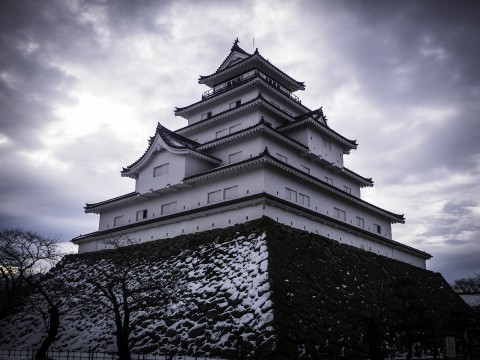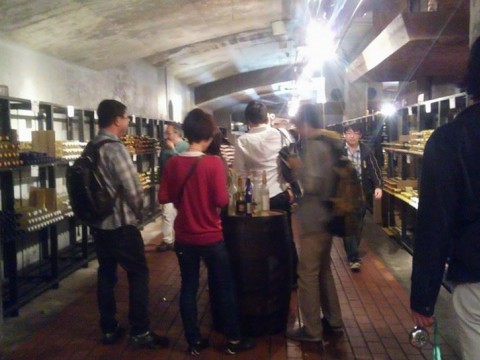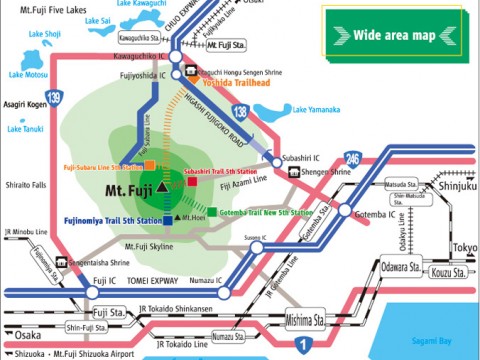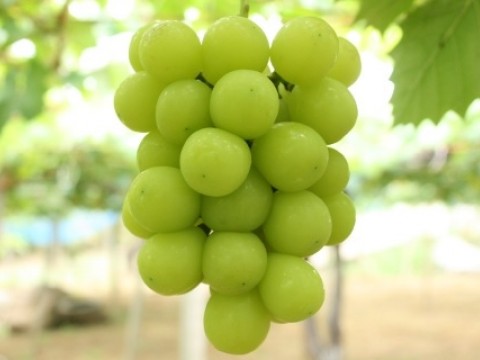Hands-on Tour of Yamanashi's Grape Heritage
A visit a domestic Balsamic vinegar plant, and an Old folk house restaurant
One of the greatest things about Yamanashi is the production of a wide range of different fruits. The type of fruit in a certain area depends on the altitude. Hokuto city, near the Yatsugatake mountain range in the North of the prefecture, produces apples pears and cherries. Going down into the lower areas of Yatsugatake and the Kofu valley you will find apricots, kiwi, grapes, prunes, and other fruits.
The North-Eastern area of the Kofu valley, around Katsunuma, Enzan, and Yamanashi-shi, is famous for its grapes and world-class wine production. In Yamanashi, there is a culture of cultivating grapes that stretches back over 1000 years. Wine is not the only product you can make with grapes. Less known products coming from the area are Wine vinegar and
Balsamic vinegar.
Now, in addition to wine-related tours that allow you to get a sense of Yamanashi's grape-growing heritage across the four seasons, travel tours are in the works where you will be able to enjoy tasting wine vinegar and balsamic vinegar. On this occasion, I was able to participate in a monitoring tour to help with the tour's creation. Here, I tell how things went.
The tour involves a visit to two locations: the Asaya Foods vinegar plant, near Yamanashishi Station, and LA MAISON ANCIENNE, a French restaurant in the high altitudes of Makioka, near Enzan Station. The participants of the tour gathered in front of the Yamanashi-shi station. Most of the participants arrived by train from Tokyo or Nagoya. I parked my car in the municipal parking lot, just a three-minute walk from the station. A dedicated taxi, which is part of the tour, took us to Asaya Foods. There they produce high-quality natural wine vinegar and balsamic vinegar. It is a relatively small local company that was founded 60 years ago. It took about 10 minutes to get from the station to the production plant.
We were welcomed by the director of the company, Ms. Hiroko Sugiyama, the founder's daughter.
We were seated in a bright room with a simple but modern interior. After her introduction, Mrs. Sugiyama started with a slideshow explaining the production process of wine vinegar and the varieties that are made.
During the presentation, we were able to sample the wine that is used to make the vinegar along with some freshly made wine vinegar, introducing to us a variety of tastes and textures. We all agreed that the vinegar that had fermented for only a short time was very sour. But to our surprise, we learned that the taste and smell of vinegar become milder and mellow after it has aged for a few years. It also introduced us to the differences between white and red vinegar.
A fun activity was prepared as part of the tour. We each received a small glass bottle, along with various herbs (juniper berries, rosemary, and dried rosehips). After putting the herbs in the bottle we could fill the bottle with white wine vinegar and cap the bottle. This was fun to do and gives a great souvenir.
Like wine, wine vinegar can be divided into white and red vinegar. Asaya uses 16 to 20 different types of locally grown grapes for its vinegar. The grapes are gently pressed to get a precious grape juice taste. The juice goes through two fermentation cycles. The first cycle turns it into wine. Then acetic acid is added to the wine to turn it into vinegar. The vinegar is aged for five years to deepen the flavor. There are no chemicals used to speed up the process.
Next was an introduction to the process of Balsamic vinegar making. Of course, no
introduction of a product as special as balsamic vinegar goes without tasting. Some balsamic vinegar was poured into small cups. That vinegar turned out to be quite dark, almost black, with a syrupy texture. It was clear that we were going to be tasting something a lot different from the wine vinegar earlier. The balsamic vinegar had a very mildly acidic, almost sweet taste.
Asaya foods are the main producer of Balsamic vinegar in Japan. The vinegar originially originates from Modena and Emillia area in Italy. Although the name might suggest differently, no herbs (or balsam) are used in balsamic vinegar. "Balsamic" derives from the Latin word balsamum, and Greek βάλσαμον, meaning “balsam-like”: restorative or curative.
The process used by Asaya Foods to make balsamic vinegar differs from the traditional methods that are recognized in Italy. In Italian tradition, they only use four types of grapes. Asaya uses 16, or more, kinds of grapes to produce the vinegar. The grapes are gently pressed, mainly by making use of their own weight. The juice is carefully boiled down to a thick syrup and mixed with some of the 5 years old wine vinegar. Thereafter poured into seven different wooden barrels. The different sized barrels made of Ash, Juniper, Mulberry, Acacia, Oak, Cherry and Chestnut, enrich the syrup with a different aroma and flavor. After the stock is aged for 6 years, the balsamic vinegar is blended and bottled. Annually only 1000 bottles are produced. The labels are carefully hand numbered by ms. Sugiyama. Every year, the Balsamic vinegar goes on sale on 22 November.
After the tour of the plant, we took the taxi to LA MAISON ANCIENNE in Makioka and had lunch there. Opened in 2016, the restaurant is set in a "kominka" (a type of traditional Japanese house), which, during the Edo period, housed a guide who would direct pilgrims that had come to worship Mt Fuji to the temples among other things. The old house was moved from the Fuji area to Makioka. Surrounded with a nice garden, it offers a beautiful view over the local grape fields, the Kofu valley, and on Mt. Fuji. The chef used to work in a five-star restaurant. The restaurant uses mainly locally produced ingredients except for the fish, which is brought in directly from the harbor of Yaizu in Shizuoka prefecture. Of course, some of the dishes were prepared with the wine vinegar we tasted earlier. The vinegar really blended in well with the dishes.
Entering the restaurant gives you the feeling that you just stepped back in time. The wooden construction of the house is made of old beams and white Japanese style stucco walls. Together with the indirect light from the windows, it creates a warm atmosphere. An ambiance you will not easily find in the cities.
We were seated at the large table in the side-room. The restaurant offers an assortment of local wine to choose from. (wine is not included in the tour price). Since I had to drive back home after the lunch I had to pass on the wine. The menu contained eight different dishes which were creatively prepared by the chef and is round off with coffee or tea. The restaurant has no “regular” menu and changes daily, depending not only on the availability of ingredients but also on the mood of the chef.
After the lunch was over we were brought back to the station by the taxis. I surely did enjoy the visit to the vinegar plant and the delicious food. It would have been perfect had I been able to visit one of the local onsen at the end of the day. Surely, this is something to look forward to on my next visit in the area.
Although I was not able to visit it on this occasion, in Yamanashi City, there is a hot spring with a 1300-year-old history called Iwashita Onsen. It is the oldest of its kind in Yamanashi, and It was once the personal hot spring of Takeda Shingen. The older building of the Iwashita Onsen Ryokan was built in 1875 and houses a spring source in the semi-basement. At a cool 28.2 degrees, the crystal-clear spring water will cure fatigue of both the body and the mind.
In addition, there are more tours being developed for visitors to enjoy experiencing Yamanashi. At at the Cantina Hiro winery in Yamanashi City, you will be able to get a hands-on experience of everything from the cultivation of grapes to the fermentation of wine, even getting to take some original wine away with you. An experience that involves sitting around a campfire in a vineyard, enjoying wine and French is also in development.
These are all things that I am looking forward to for when I next visit the area.
*The price for the taxi to commute between the different locations is included in the tour fee.
Written by Jan-Peter

DeepJapan Editor
Japan



















